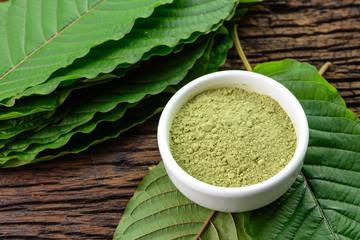Kratom may be a relatively new product on the market. But the herb has already earned a reputation for its powerful medicinal properties.
Scientifically known as Mitragyna speciosa, kratom is indigenous to the Southeast Asian countries of Thailand, Malaysia, Indonesia, Myanmar, and Papua New Guinea. Locals have been chewing the plant’s leaves for thousands of years to treat various ailments in these countries.
Pain remains the most common issue that people may use kratom for. Indeed, there’s no shortage of places where you can buy it.
But before you hit the stores, it would help to understand how kratom may mitigate pain and why you should consider this herb over common pain-relieving medications.
This article expounds on kratom’s role in pain management.
How Does Kratom Relieve Pain?
Before you buy the best kratom for pain and sleep, you must understand kratom’s role in pain relief. It’s essential to start by examining how the body detects and transmits pain signals.
The body comprises pain receptors known as nociceptors. These receptors pick up external stimuli and convert the sensations into electrical signals.
The signals travel along neural pathways to the brain and central nervous system. Your brain translates these signals and relays appropriate messages to various body parts.
Now, kratom affects how your pain-signaling receptors work. The herb is packed with potent alkaloids that interfere with the body’s perception of pain. The most popular of these alkaloids are mitragynine and 7-hydroxy mitragynine.
Studies on kratom’s opioid-like properties indicate that, when consumed, mitragynine breaks down into 7-hydroxy mitragynine in the body.
The latter compound interacts with opioid receptors located in the brain (including delta, kappa, and mu receptors) through a complex phenomenon that triggers the release of endorphins.
Endorphins are ‘feel-good’ neurotransmitters known to decrease the intensity of pain. High levels of endorphins in the body translate to reduced pain sensations.
Endorphins also play a crucial role in blocking the adverse effects of the stress hormone cortisol. Therefore, kratom is also a natural way to combat stress and anxiety.

Is Kratom Addictive?
Kratom binds to opioid receptors in the brain as closely as standard opioid drugs like morphine and codeine. However, kratom seems to present lower addiction and dependency risks than conventional opioids.
Why is that so, yet the two classes of medications exhibit a near-identical behavior?
Kratom is classified as a partial opioid agonist, whereas regular opioid drugs are considered full opioid agonists.
Partial opioid agonists are compounds that bind only partially to the brain’s opioid receptors. Substances that bind fully to these receptors constitute full opioid agonists.
Kratom’s partial effects on the mu-, kappa- and delta-opioid receptors explain why the herb is less likely to induce addiction and dependency.
It’s also why medical experts now recommend kratom for people battling opioid withdrawal symptoms.
Opioid withdrawal symptoms are a host of adverse effects experienced when an opioid user suddenly cuts back or cuts out on opioid drugs. Common symptoms include nausea, anxiety, headaches, and drowsiness.
Taking kratom during the opioid withdrawal period allows your body to adjust effectively to the decrease in your regular opioid dosages without experiencing problematic side effects.
That said, it’s worth noting that kratom may trigger several other side effects. Typical kratom adverse effects include unintentional weight gain/loss, appetite changes, drowsiness, erectile dysfunction, etc.
However, these symptoms will only show if you overdose on kratom. So, always ask for an expert recommendation.
Will Kratom Get You High?
Kratom belongs in the same family as coffee. Therefore, the herb is noted for its potential for boosting physical and mental energy.
Kratom also induces mild euphoria. Studies have shown that the herb’s energy-boosting properties mainly depend on its euphoria-inducing abilities.
Kratom’s euphoria-inducing abilities might supplement the herb’s opioid-like effects. That’s because people in a state of euphoria tend to engage more intensively in activities that humans generally find pleasurable, such as working, exercising, and having sex.
Therefore, you’re likely to be more productive under mild kratom stimulation even if you suffer from a chronic pain condition that would otherwise affect your productivity.
However, note that high doses could induce sedation.
Choosing the Best Kratom Products for Pain Relief
Kratom is available in multiple strains. As you shall find, certain strains are more effective for pain relief than others.
When looking for kratom strains for pain mediation, keep your eyes out for the word “Red.” You’ll encounter strains labeled Red Vein, Red Borneo, Red Malay, etc.
Red Vein Kratom refers to kratom whose leaf veins are red. Note that kratom leaves change to different colors depending on the tree’s maturation period.
Younger kratom leaves tend to have white veins. Extracts obtained from such trees are incredibly stimulating. As the tree ages, the colors of the veins change from white to green, and eventually red.
Red Vein Kratom is noted for its remarkable pain-relieving benefits. The strain is also highly sedating, making it a potential remedy for stress, anxiety, depression, and insomnia.
Now, the words Borneo, Malay, etc., appearing after the word “Red” simply denote the country or region of origin. For instance, Red Malay Kratom is a red kratom strain derived from Malaysia.
Final word
Kratom may be effective against pain. Also, herb can be less addictive than conventional opioids makes it all the more attractive as a pain-relief medication. However, note that kratom is only effective if consumed in moderation.
The Author:
The writer, Tammy Taylor, is a full-time content marketing specialist. She has been closely studying the cannabis industry trends for quite some time. She is currently working with Kratom Krush and She has worked for various domains before coming to the cannabis industry like toolsclick. When she is not working, Tammy likes to work out, try new foods and play with her dog.
Featured Image
- By Yanawut Suntornkij on AdobeStock


